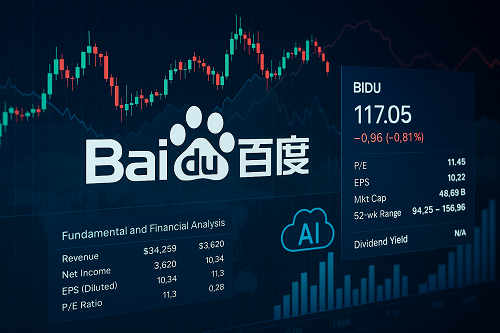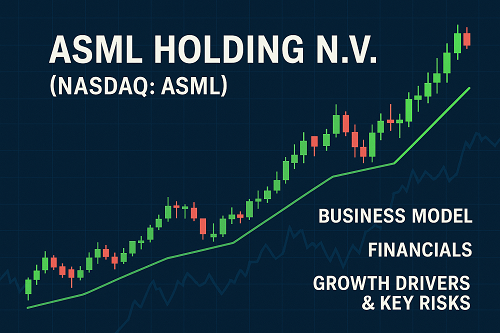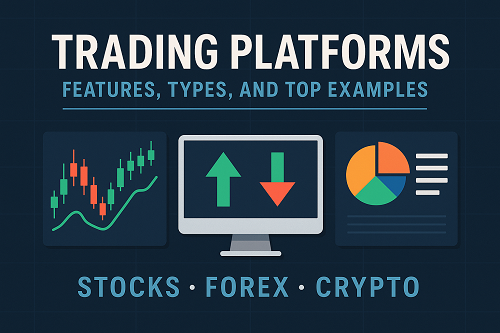Baidu Inc. is China’s dominant search-engine operator (and increasingly an AI/cloud player) trading under ticker BIDU. For those interested in investing, the Baidu stock price can offer valuable insights into its market trends. Despite recent headwinds in its core advertising business—tied to China’s macro challenges—the stock offers a compelling long-term setup, provided you are comfortable with policy/regulation risk and navigating the China tech landscape.
Key takeaways:
- Market position: #1 search engine in China, diversifying into AI/cloud, autonomous driving.
- Current valuation: P/E low relative to growth; some analysts flag undervaluation.
- Recent volatility: Advertising revenue weakened (core business) while AI/cloud segments show promise.
- Analyst sentiment: Consensus “Moderate Buy”, with average target ~$128–$135.
- Major risk: China macro weakness, regulatory/policy shifts, competition in AI/cloud.
- Major opportunity: If Baidu executes on its AI/cloud transformation, and the advertising cycle recovers, there’s upside potential.
This article will walk through: company overview & business model, fundamental analysis, valuation, growth drivers, risk assessment, technical/trading angles, comparative context, and actionable trade/investment strategies.
Company Overview & Business Model
Who is Baidu?
Baidu Inc., founded in 2000 and headquartered in Beijing, is a leading Chinese internet services and AI company.
Its principal segments:
- Core online marketing services: Traditional search engine advertising & feed-based ad revenue.
- AI Cloud & other services: Cloud infrastructure, AI models (foundation models), autonomous driving (Apollo), video streaming.
- Non-online marketing businesses: Growing as part of the transition away from pure ad-dependence.
Competitive Position
- Baidu maintains ~50%+ share of China’s search market.
- Its strength lies in combining search + large data + AI infrastructure — offering a platform to leverage generative AI and cloud expansion.
- The shift from “internet search/ads” to “AI-first, cloud + services” is a major thematic pivot.
Revenue & Business Trends
- The core ad business has been under pressure due to China’s economic slowdown, weaker ad spend and competition.
- Meanwhile, AI Cloud and other segments are posting strong growth. For example: cloud drove 34 % growth in the April–June quarter while ad revenue fell ~15 %.
- The business model therefore is evolving: from mature and slower-growth ad revenue to a higher-growth but higher-execution-risk AI/cloud segment.
Fundamental & Financial Analysis
Key Ratios & Metrics
- P/E (TTM) ~ 11–12×.
- Price/Sales ~2.4× in one analysis.
- Return on Equity ~10.3 %.
- Debt/Equity ~0.30 (i.e., reasonably modest leverage).
- Growth rates: Revenue growth low-single digits in recent quarter (~5.7% e.g.).
Valuation Insight
- One DCF-based valuation model estimates intrinsic value ~US $95.39 in a base case, indicating potential overvaluation from current price (~US $117 at time of writing).
- However, analysts’ consensus targets are higher (~US $128.93) implying modest upside (~7%) from current levels.
- The discrepancy reflects transitional business model risk vs latent growth potential.
Growth Prospects & Catalysts
- AI Cloud: Growth rates in the 30%+ range in certain quarters for cloud and non-ad segments.
- Foundation Models / Generative AI: Baidu is investing in its “Ernie” model and other AI tools, positioning to compete in the AI arms race.
- Autonomous Driving (Apollo): A longer-term play on mobility, with potential upside if commercialised successfully.
- Advertising Recovery: If China’s ad market rebounds, the core business could see a tailwind.
Risks & Headwinds
- The ad business is vulnerable to China macro headwinds: weak consumer spending, property downturn, regulatory shifts.
- Execution risk: Transitioning to AI/cloud is expensive and competitive (domestic peers, global peers).
- Regulatory/policy risk: Chinese tech firms face heightened scrutiny, export controls, local regulation.
- Valuation risk: Even with low multiples now, if growth disappoints, re-rating downward is possible.
Valuation Scenarios & Trading Thesis
| Scenario | Key Assumptions | Implied Price / Return |
|---|---|---|
| Base-Case | Moderate cloud growth, ad business flat, execution average | ~$95 (per DCF) |
| Bull Case | Strong cloud/AI growth 30%+, ad business recovers, margin expansion | ~$140-$160 (based on high end analyst targets) |
| Bear Case | Ad business deteriorates, cloud growth stalls, China macro worsens | <$80, possible significant downside |
Investment Thesis:
If you believe Baidu can successfully pivot into high-growth AI/cloud while holding the line on its core ad business, the stock offers mild upside with limited valuation downside today. Conversely, if you view the China tech/regulation risk as too high and the ad decline as structural, then there is real risk.
Trading Thesis:
From a trading perspective, BIDU can be viewed as a swing/trade candidate when AI/cloud catalysts hit or China ad data surprises positively. Positioning with tight risk control is key given volatility in Chinese tech.
Technical & Trader Considerations
- Monitor breakout above major resistance levels (e.g., US $130–140) as a signal of renewed bullish momentum.
- Use stop-losses on any trade given the macro/regulation tail-risk.
- Watch volume spikes around earnings/AI announcements for potential entry points.
- Consider hedging or size management given China exposure (currency, geopolitical, policy risk).
Comparative Context: Baidu vs. Peers
- Comparison to BABA (Alibaba) and TCEHY (Tencent) – all face similar Chinese tech/regulation/ad macro risk, but Baidu has arguably more of an “AI pivot” story.
- Versus Western AI/cloud plays: Baidu trades at a lower multiple, offering value if growth executes.
- In global search/AI index: Baidu’s domestic dominance gives it a moat but also means China-specific risk.
Key Upcoming Catalysts to Monitor
- Quarterly results: particularly the split between ad revenue vs. cloud/AI revenue growth.
- China macro data: ad spend, consumer demand, regulatory policy announcements.
- AI product launches: new foundation models, partnership announcements, autonomous driving commercialization.
- Regulatory/regime risk: Chinese government actions on tech/AI sectors, US-China tensions.
- Valuation re-rating: If Baidu beats expectations, multiple expansion could follow.
Practical Takeaways for Investors/Traders
- If you’re conservative: Wait for confirmation of a sustained cloud/AI growth ramp + ad recovery before committing meaningful capital.
- If you’re bullish: Consider initiating a modest position with defined stop-loss (e.g., below US $90) and target upside to US $140+.
- If you’re trading: Use short-term momentum events (AI launch, regulatory relief) and manage risk tightly given China tech volatility.
- Diversify: Given the China market/regulation risk, ensure this position is part of a broader diversified portfolio rather than a large concentrated bet.
Conclusion
Baidu Inc. (BIDU) stands at an inflection point: its core ad business faces near-term headwinds, but the pivot to AI/cloud/autonomous mobility offers substantial long-term potential. The valuation today appears modest for what could become a higher-growth story — yet the risks are real and non-trivial. For investors and traders willing to embrace the China tech landscape and manage the risks, BIDU presents an attractive risk-/reward trade. The key will be execution: if AI/cloud growth accelerates and ad business stabilizes, the upside can be meaningful. If not, the bear case remains.





 XAUT-USD
XAUT-USD  AMD
AMD  MARA
MARA  SHOP
SHOP  BULL
BULL  CL=F
CL=F